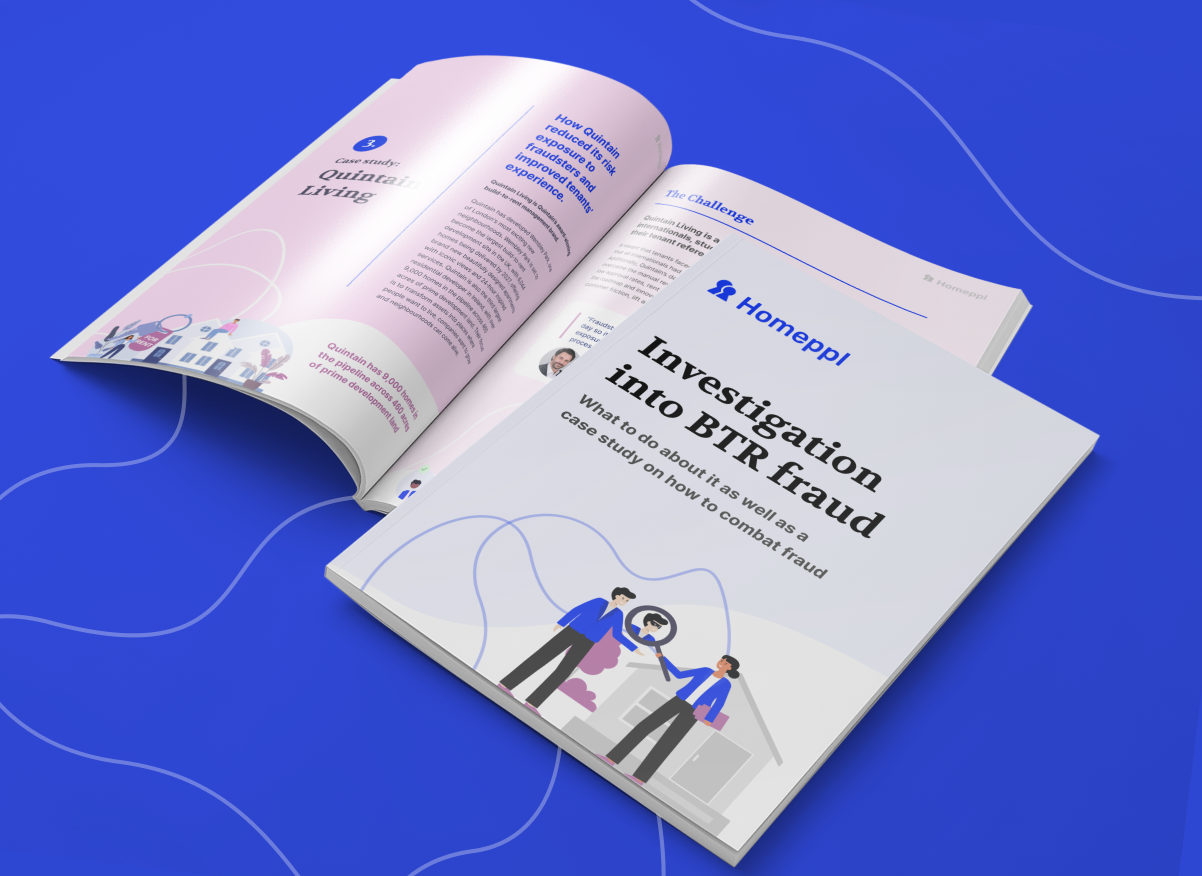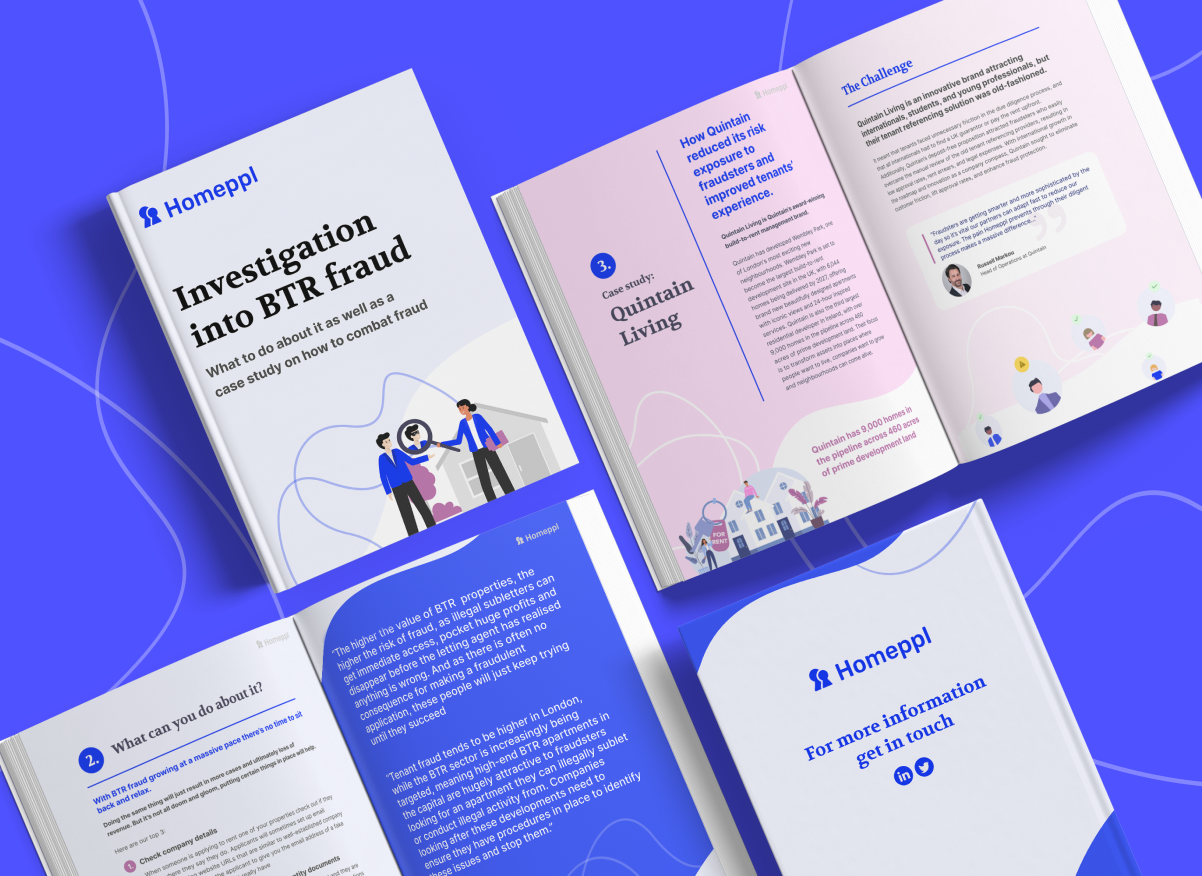Fraud in Build-to-Rent Developments: An Investigation


How to avoid tenant fraud revealed in new report
We take a look at fraud in the BTR space and how to avoid it. With there being a 364% rise in fraudulent tenant applications in BTR in the past six months, it's vital companies combat fraud before it hits.

This guide includes
Why build to rent is being targeted by fraudsters
Ways to stop fraud in its tracks
Case study on how to reduce risk exposure
An overview of the findings
Build to rent top target for tenant fraud
The Build to Rent sector is being targeted by tenancy fraudsters with a 364% rise in fraudulent tenant applications in the past six months, according to our new data. To correlate with this upward trend, the detection of fraud in this space has seen a significant increase in value, meaning landlords are ultimately saving £1.59m from not accepting fraudulent applications.
Build to rent - where homes are built specifically for rental purposes rather than for sale and are owned and managed by a professional firm - has been growing exponentially in recent years.
The magnificent buildings created by the organisations cater for residents' every need, including cinemas, gyms and community areas. The properties are high quality and include onsite extras, utilities are bundled into the monthly price, there is often no deposit and renters have the right to leave with short notice periods, making them a hugely attractive option for renters.
However, their appeal is also their downfall. The fact that utilities are included, and no deposit is due means that potential fraudsters not only avoid upfront costs - inability to pay a deposit would usually be a red flag - but also, they only need to pass one identity check before being approved by the letting agency, making it easier for them to get away with a fraudulent application.
All these reasons mean these types of developments are key targets for fraudsters.
The landlord is then left vulnerable legally and financially, with losses potentially running into the tens of thousands thanks to unpaid rent and utilities, damage to the property and legal costs.
The properties are high quality and include onsite extras, utilities are bundled into the monthly price, there is often no deposit and renters have the right to leave with short notice periods, making them a hugely attractive option for renters.
However, their appeal is also their downfall. The fact that utilities are included, and no deposit is due means that potential fraudsters not only avoid upfront costs - inability to pay a deposit would usually be a red flag - but also, they only need to pass one identity check before being approved by the letting agency, making it easier for them to get away with a fraudulent application.
With BTR fraud growing at a massive pace there’s no time to sit back and relax. Doing the same thing will just result in more cases and ultimately loss of revenue. But it’s not all doom and gloom, putting certain things in place will help.
Here are our top 3:
Check company details
When someone is applying to rent one of your properties check out if they work where they say they do. Applicants will sometimes set up email addresses using website URLs that are similar to well-established company websites. This allows the applicant to give you the email address of a fake ‘boss’ for a job that they don’t really have
Double check and cross-reference identity documents
Use tech to check their passport or driving licences are real and they are who they say they are. Compare these documents with other applications you have had in the past. Many fraudsters attempt to gain property multiple times.
Do a detailed review of all documentation
Tools to edit documents are now easily accessible online and so some applicants have become very skilled at tampering with bank statements or other documentation to carry out fraud. You need to sift out what’s real and what’s fake. The best way to do this is using the latest tech available to you.
Alexander Siedes, our CEO and Founder, said:
“The higher the value of BTR properties, the higher the risk of fraud, as illegal subletters can get immediate access, pocket huge profits and disappear before the letting agent has realised anything is wrong. And as there is often no consequence for making a fraudulent application, these people will just keep trying until they succeed “Tenant fraud tends to be higher in London, while the BTR sector is increasingly being targeted, meaning high-end BTR apartments in the capital are hugely attractive to fraudsters looking for an apartment they can illegally sublet or conduct illegal activity from. Companies looking after these developments need to ensure they have procedures in place to identify these issues and stop them.”
Landlords are left vulnerable
The landlord is then left vulnerable legally and financially, with losses potentially running into the tens of thousands thanks to unpaid rent and utilities, damage to the property and legal costs.
Alexander Siedes, our CEO and Founder, said:
“We have seen a sharp rise in fraudulent tenant applications within the build to rent sector over the past six months.
“In the last 3 months one of Homeppl’s clients found 3.5% cases of fraud in the build to rent sector, which highlights the vulnerability of the sector and the property agents who act as landlords.
“And while agents using our tenant referencing systems can be safe in the knowledge that fraudsters will not be able to fool our unique fraud detection tests - which use behavioural analysis, financial algorithms, and Open Banking data to validate the person’s identity and financial abilities - most checks are unable to reliably detect fraud or authentic data. Our clients have 0% defaults - the industry average is 8%.”
Alexander says that as the build to rent sector continues to grow, the problem of rental fraud will only increase. We have an interesting case study on Living by Scape - a London BTR company who Homeppl have helped with detecting fraud in the past.